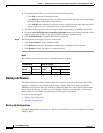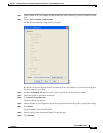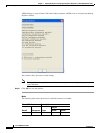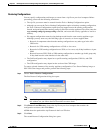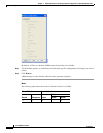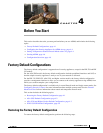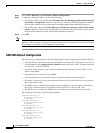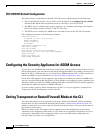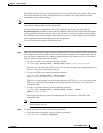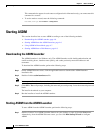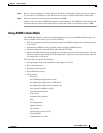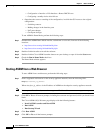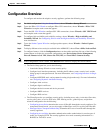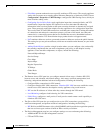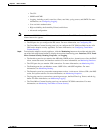
4-4
Cisco ASDM User Guide
OL-16647-01
Chapter 4 Before You Start
Configuring the Security Appliance for ASDM Access
PIX 515/515E Default Configuration
The default factory configuration for the PIX 515/515E security appliance provides the following:
• The inside Ethernet1 interface. If you did not set the IP address in the configure factory-default
command, then the IP address and subnet mask are 192.168.1.1 and 255.255.255.0.
• The DHCP server is enabled on the security appliance, so a computer connecting to the interface
receives an address between 192.168.1.2 and 192.168.1.254.
• The HTTP server is enabled for ASDM and is accessible to users on the 192.168.1.0 network.
The configuration consists of the following commands:
interface ethernet 1
ip address 192.168.1.1 255.255.255.0
nameif management
security-level 100
no shutdown
asdm logging informational 100
asdm history enable
http server enable
http 192.168.1.0 255.255.255.0 management
dhcpd address 192.168.1.2-192.168.1.254 management
dhcpd lease 3600
dhcpd ping_timeout 750
dhcpd enable management
Configuring the Security Appliance for ASDM Access
If you want to use ASDM instead of the CLI to configure the security appliance and you have a factory
default configuration, you can connect to the default management address by pointing your browser to
https://192.168.1.1. Alternatively, you can use the Cisco ASDM Launcher (if it is already installed) to
connect to ASDM. For more information, see
Factory Default Configurations, page 4-1.
For the ASA 5505 adaptive security appliance, the switch port to which you connect to ASDM can be
any port, except for Ethernet 0/0. On the ASA 5510 and higher version adaptive security appliances, the
interface to which you connect to ASDM is Management 0/0. For the PIX 515/515E security appliance,
the interface to which you connect to ASDM is Ethernet 1.
If you do not have a factory default configuration, see the Cisco Security Appliance Command Line
Configuration Guide for instructions to access the CLI.
Setting Transparent or Routed Firewall Mode at the CLI
You can set the adaptive security appliance to run in the default routed firewall mode or transparent
firewall mode. For more information about the firewall mode, see the
Firewall Mode Overview. For
multiple context mode, you can use only one firewall mode for all contexts. You must set the mode in
the system execution space.
When you change modes, the adaptive security appliance clears the configuration, because many
commands are not supported in both modes. If you already have a populated configuration, be sure to
back up this configuration before changing the mode; you can use this backup configuration for
reference when you create a new configuration.



